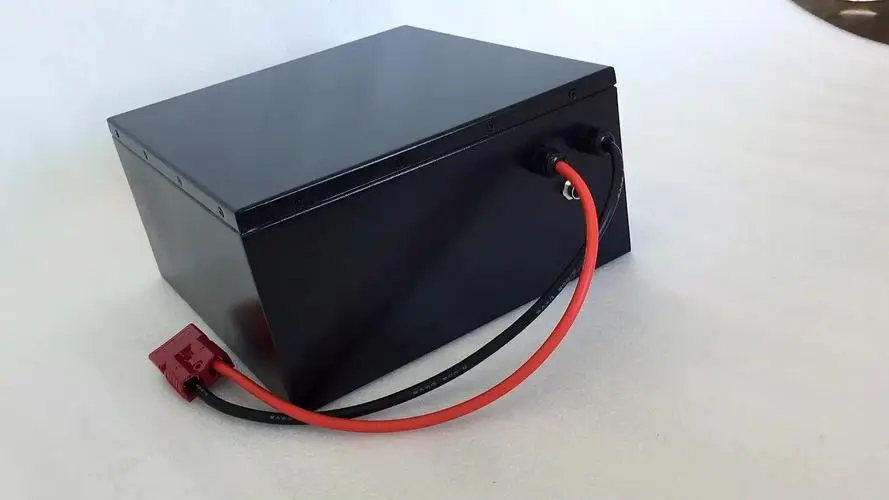 |
Welcome To Evlithium Best Store For Lithium Iron Phosphate (LiFePO4) Battery |
 |
Batteries are some of the most widely used devices in the world today. Currently, lithium-ion and lead-acid batteries are the two most prevalent types, with LFP (Lithium Iron Phosphate) and AGM (Absorbent Glass Mat) batteries being well-known for their energy storage capabilities. Despite both being popular for energy storage, these two types of batteries have significant differences due to their distinct materials and properties.

An LFP battery, or Lithium Iron Phosphate battery, is a type of lithium-ion battery that uses lithium iron phosphate for the positive electrode and carbon for the negative electrode. Its nominal voltage is 3.2V. One of its most reassuring features is its excellent safety performance, which is why many manufacturers favor LFP batteries.
An AGM battery is a type of valve-regulated sealed lead-acid battery that uses a glass fiber separator. Its positive and negative electrodes are made of lead and lead oxides, and it uses sulfuric acid as the electrolyte. The nominal voltage is 2.0V. AGM batteries have a long history and are among the most widely used batteries globally.

LFP batteries are generally less than half the weight of AGM batteries and are also smaller in size. For the same capacity, the size and appearance difference between these two batteries is substantial.
LFP batteries typically have an energy density of 90-160 Wh/kg, with high-quality versions reaching 180-210 Wh/kg. AGM batteries, on the other hand, have an energy density of 50-70 Wh/kg. This means LFP batteries can provide more energy while occupying less space.
The recommended Depth of Discharge (DoD) for LFP batteries is 80%, whereas for AGM batteries, it's about 50%. To achieve the same energy output, more AGM batteries may be needed compared to LFP batteries.
Under normal use, LFP batteries can last over 10 years with 3000-7000 cycles. In contrast, AGM batteries typically last 3-5 years with 1000-1200 cycles.
LFP batteries charge much faster than AGM batteries. An LFP battery can be fully charged in about 5 hours, while an AGM battery may take more than 10 hours. LFP batteries support higher discharge rates (1C) compared to AGM batteries (0.5C), making them more efficient in high-demand scenarios.
LFP batteries are highly resistant to high temperatures but perform poorly in low temperatures and generally cannot be charged below 0°C. AGM batteries, however, have a broader operating temperature range and can be charged at low temperatures.
LFP batteries are extremely safe, thanks to their chemistry and manufacturing. They do not explode even if subjected to severe abuse, such as being thrown from a height, squeezed, or punctured. AGM batteries, with their sulfuric acid electrolyte, pose a greater danger in case of leakage.
LFP batteries use more environmentally friendly materials and have less impact on the environment. AGM batteries contain lead, a toxic heavy metal. Both types of batteries should be disposed of properly to minimize environmental harm.
LFP batteries have a self-discharge rate of 2-3% per month, whereas AGM batteries have a rate of 4-6% per month (with other lead-acid batteries potentially reaching 20%). This means LFP batteries can be stored longer without needing frequent recharging. AGM batteries should be stored at 100% State of Charge (SOC), while LFP batteries only need 50%.
LFP batteries are more expensive upfront, costing more than three times the price of AGM batteries. However, over a lifespan of more than five years, LFP batteries can be more cost-effective and provide better overall performance, life, and safety.
Both LFP and AGM batteries have their merits, and the choice largely depends on your budget. If you have a higher budget, LFP batteries are the superior choice due to their longer lifespan, better performance, and safety. If you are on a tighter budget, AGM batteries are still a good option. However, generally speaking, LFP batteries are recommended for their overall benefits and ability to replace almost any lead-acid battery, making them a valuable upgrade.
Edit by paco
All Rights reserved © 2025 Evlithium Limited